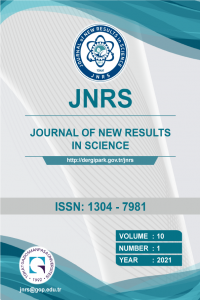Testing the usage of ITS2 and 28S-D2 markers in identifying some species of Ammophila, Prionyx, and Sphex genera (Hymenoptera: Sphecidae)
Testing ITS2, identifying,
___
- of California Press, Berkeley, Los Angeles, London. pp. IX+695, 1976.
- (Hymenoptera: Apoidea: Sphecidae: Sphecini). J Hym Res 9 (2000), 324-346.
- (Hymenoptera: Apoidea) basierend auf molekularen Daten. M D Gesell Allg Ange 16 (2008), 99–
- (Hymenoptera: Braconidae): Combined Analysis of 16S and 28S rDNA Genes and Morphological Data. Mol Phylogenet Evol 10 (1998), 354-366.
- Evolution of Sociality in Wasps. Mol Phylogenet Evol 9 (1998), 183-191.
- Encarsia luteola (Hymenoptera: Aphelinidae). Ann Entomol Soc Am 93 (2000), 738-744.
- (Hymenoptera: Trichogrammatidae) species in China. Eur J Entomol 104 (2007), 363-367.
- ITS2 Ribosomal DNA Sequence Variation of the Bumblebee, Bombus ardens (Hymenoptera: Apidae). Genes and Genomics 31(2009), 293-303. based on some morphological scales and 28S D2 rDNA with description of a new species. Turk J Zool 34 (2010), 279-289.
- Ribosomal DNA ITS2 Region in Two Trichogramma Species (Hymenoptera: Trichogrammatidae). Arch Biol Sci Belgrade, 63 (2011), 949-954. of Trichogramma turkestenica (Hymenoptera: Trichogrammatidae) which Inhabits Taif
- Governorate at the West of Saudi Arabia, Afr J Biotechnol 10 (2011), 9467-9472.
- F. H. Collins, S. Paskewitz, A review of the use of ribosomal DNA (rDNA) to differentiate among cryptic Anopheles species. Insect Mol Biol 5 (1996), 1-9. including the Culex pipines complex, inferred from the internal transcribed spacer of ribosomal
- DNA. Insect Mol Biol 5 (1996), 93-107.
- ‘chagosensis’ (Porifera: Calcarea) from ribosomal DNA sequences: implications for populations history and conservation of the Great Barrier Reef World Heritage Area (Australia). Mol Ecol 11(2002), 1753-1768.
- Trichogramma (Hymenoptera: Trichogrammatidae) Using Sequences of the ITS2 Region and Restriction Analysis. Neotrop Entomol 30 (2001): 259-262.
- Babcock, Molecular systematics of the Chalcidoidea using 28S-D2 rDNA. In: Hymenoptera, evolution, biodiversity and biological control (ed. Austin AD and Dowton M), CSIRO Publishing, Melbourne, pp. 59-73 (2000).
- Hymenoptera): 28S D2 rDNA considerations of the Brachycyrtinae, Labeninae, Paxylommatinae and Xoridinae. Zool Scr 28 (1999), 203-210.
- Hymenoptera: Apocrita: evolutionary transitions among parasitic wasps. Biol J Linn Soc 74 (2001), 87
- ISSN: 1304-7981
- Yayın Aralığı: 3
- Başlangıç: 2012
- Yayıncı: TOKAT GAZİOSMANPAŞA ÜNİVERSİTESİ
Serdar Enginoglu, Hilal Donmez
Shijina V, Sunil JOHN, Anitha THOMAS
Said Broumi, Florentin Smarandache
Reza Amiri, Marjan Rafsanjani, Ehsan KHOSRAVİ, Hadis Amiri
